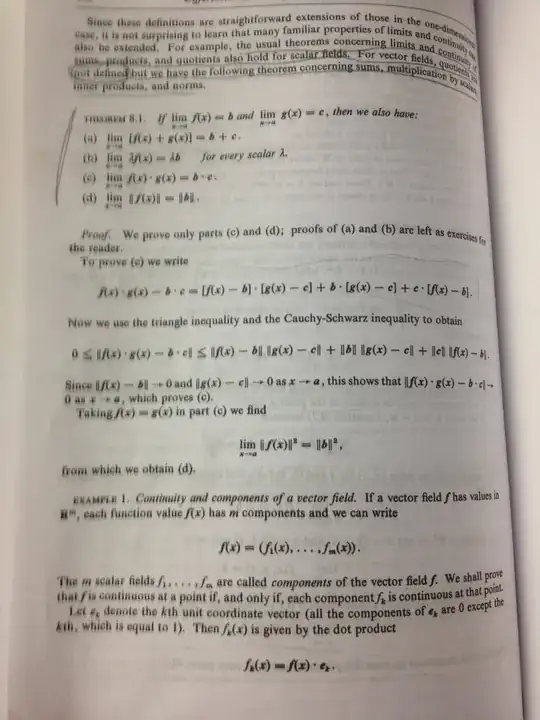Your proof starts with a good technique namely reducing the problem to a simpler case of it. Here you have $\lim_{x \to a}\{f(x) - A\} = 0$ and $\lim_{x \to a}\{g(x) - B\} = 0$ and you have to establish that $\lim_{x \to a}\left\{\{f(x) - A\} + \{g(x) - B\}\right\} = 0$
However you write that "we know that $$0 \leq \lim_{x \to a}|(f(x) - A) + (g(x) - B)| \leq 0$$ This step is not obvious from $\lim_{x \to a}\{f(x) - A\} = 0$ and $\lim_{x \to a}\{g(x) - B\} = 0$. At some point you do need to use $\epsilon , \delta$ arguments.
It would be better however to proceed to directly with $f(x), g(x)$ instead of $f(x) - A$ and $g(x) - B$. Try to use the definition of limits and there should not be any problem.
About Apostol's proof in Calculus II, can you show it here (by typing or more easily by attaching an image)? Then it would be possible to comment on it.
Update: After looking at Apostol proof (image attached) it is clear that he is using the already established theorems on limits of real valued functions (in Apostol 1 page 132) and he is using them very smartly to prove theorems related to vector valued functions.
In Apostol 1, he does make use of $\epsilon, \delta$, but he proves the theorems under the assumption that $A = B = 0$ and says that this is sufficient to handle the general case. This means for example, that Apostol proves using $\epsilon, \delta$ (in Apostol 1) the following theorem:
If $\lim_{x \to a}f(x) = 0, \lim_{x \to a}g(x) = 0$ then $\lim_{x \to a}\{f(x) + g(x)\} = 0$
Assuming that you have understood this proof from Apostol 1, your approch to prove the result below is OK.
If $\lim_{x \to a}f(x) = A, \lim_{x \to a}g(x) = B$ then $\lim_{x \to a}\{f(x) + g(x)\} = A + B$
But you can't ignore the basic result when $A = B = 0$ which was proved on Page 132 of Apostol 1.
Further Update (based on OP's comments): How does $A = B = 0$ version imply the general version? I have to say that you have answered exactly this part correctly in your question. Only thing was that you did not know that you were assuming the already established special case of $A = B = 0$ and that's why I objected that your statement "we know that ...." is not obvious.
